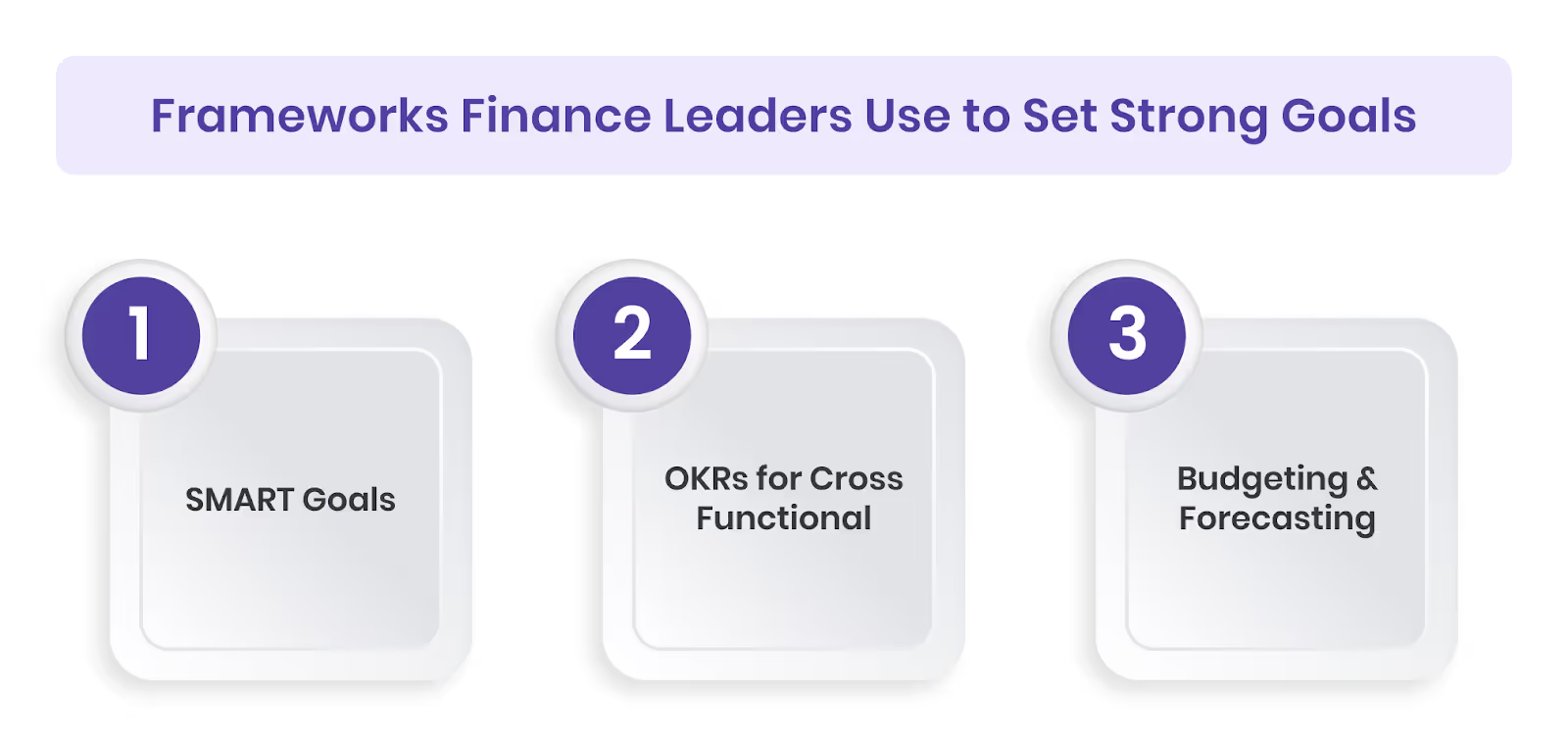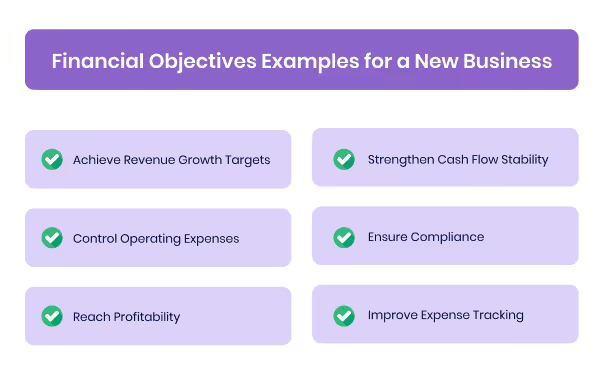For finance leaders, financial goals are more than line items in a budget — they are the compass that determines whether a business scales sustainably or stalls under pressure. Goals provide direction, ensure accountability, and give investors and regulators confidence that the company is in control of its finances.
In the UAE, financial goal-setting carries added importance. With the introduction of VAT (5%) and Corporate Tax (9%), businesses must operate with discipline. Without structured targets around cash flow, compliance, and profitability, even well-funded firms risk penalties, liquidity crunches, or stalled expansion.
Research has shown that companies with structured financial goals are up to 30% more likely to grow revenue year-on-year. For CFOs and finance managers, the message is clear: goal-setting is not optional — it is a requirement for credibility, efficiency, and long-term growth.
This article explores the frameworks finance leaders use, practical financial objectives examples for a new business, and why UAE companies in particular cannot afford to neglect them.
Key Takeaways
- Financial goals are measurable targets that guide business growth and compliance; they should be both short- and long-term.
- Frameworks like SMART and OKRs ensure goals are specific, realistic, and trackable.
- For new businesses, practical objectives include revenue growth, expense control, break-even timelines, cash flow stability, and compliance accuracy.
- In the UAE, VAT and Corporate Tax make financial goal-setting critical for legal compliance as well as growth.
- Automating expense tracking and using corporate cards with built-in controls helps businesses achieve financial goals efficiently.
What Are Financial Goals for a Business?
At their core, financial goals are measurable targets that align resources, decisions, and compliance obligations with a company’s broader strategy. They are not simply about hitting revenue milestones — they define how a business grows, sustains liquidity, and meets regulatory obligations.
There are two main types of goals finance leaders typically work with:
- Short-Term Goals – Achievable within 12 months, such as reducing operating expenses by 10% or shortening payment collection cycles from 60 days to 30 days.
- Long-Term Goals – Spanning multiple years, such as reaching profitability, expanding into Saudi Arabia, or maintaining a debt-to-equity ratio that reassures investors.
In the UAE, these categories also overlap with compliance priorities. For example, a short-term goal may include “achieve 100% VAT filing accuracy this quarter,” while a long-term goal could be “maintain full Corporate Tax compliance across entities during regional expansion.”
Also read: Business Budget for Startups in UAE
Frameworks Finance Leaders Use to Set Strong Goals

Setting financial goals is straightforward in theory but challenging in practice. Too often, businesses end up with vague aspirations (“increase revenue”) or unrealistic targets disconnected from capacity and market realities. Structured frameworks help finance teams in the UAE create goals that are ambitious yet achievable, and aligned with both growth and compliance.
1. SMART Goals for Practical Discipline
The SMART framework is a global standard because it forces specificity and accountability:
- Specific – Define the exact target (e.g., reduce monthly overhead by AED 20,000).
- Measurable – Set clear metrics (e.g., cut utilities costs by 15%).
- Achievable – Balance ambition with available resources.
- Relevant – Link the goal to broader strategy (e.g., cost savings to fund regional expansion).
- Time-Bound – Assign a deadline (e.g., six months).
Example in the UAE context: An SME might set a SMART goal to “achieve AED 1 million in revenue within 12 months while keeping operating expenses below 40%.” This combines growth and cost discipline while staying aligned with investor expectations.
2. OKRs for Cross-Functional Alignment
Objectives and Key Results (OKRs) are especially powerful in companies with multiple teams. They break down high-level goals into measurable results across finance, sales, and operations.
- Objective: Improve cash flow predictability.
- Key Results: Reduce average receivables from 60 to 30 days; maintain six months of working capital; cut late VAT penalties to zero.
For UAE firms, OKRs ensure compliance and growth targets don’t compete. Finance teams, for instance, can align with sales on customer payment terms to protect liquidity.
3. Budgeting and Forecasting for Compliance Readiness
Budgeting and forecasting may sound traditional, but they remain critical for regulatory environments like the UAE’s. They help companies set targets that prepare them for VAT filings, Corporate Tax planning, and investor reporting.
Two approaches stand out:
- Zero-Based Budgeting – Every dirham of expense must be justified each cycle, a useful tool for startups looking to avoid waste.
- Rolling Forecasts – Instead of static annual budgets, companies update goals quarterly to reflect seasonal demand, regulatory changes, or regional expansions.
Finance leaders we work with in Dubai and Abu Dhabi often combine SMART goals with rolling forecasts. This hybrid approach provides discipline while allowing flexibility when market conditions shift.
Also read: Effective Business Spending Policies
Financial Objectives Examples for a New Business

For startups and early-stage businesses, financial objectives provide clarity in an unpredictable environment. They not only guide resource allocation but also give investors, regulators, and banks confidence in the business model. In the UAE, where compliance with VAT and Corporate Tax is mandatory, these objectives must balance growth with regulatory discipline.
Here are six practical examples:
1. Achieve Revenue Growth Targets
Example: Generate AED 500,000 in revenue within the first 12 months.
Why it matters: Revenue growth validates the business model and reassures investors. In sectors like retail or tech, investors in DIFC or ADGM expect founders to show early traction, not just projections.
2. Control Operating Expenses
Example: Keep operating expenses below 40% of revenue in the first year.
Why it matters: Cost discipline protects liquidity. For UAE-based SMEs, this often means reducing reliance on petty cash and digitising payments.
Also read: Effective Ways to Reduce Operating Expenses
3. Reach Profitability or Break-Even
Example: Achieve break-even within 18 months by balancing revenues and costs.
Why it matters: Profitability or break-even is a milestone for external funding. Without it, scaling into GCC markets becomes significantly harder.
4. Strengthen Cash Flow Stability
Example: Maintain six months of working capital in reserve.
Why it matters: Cash shortages are the single biggest reason new businesses fail. In industries like logistics or hospitality, where receivables often stretch, reserves act as insurance.
Also read: Cash Flow Optimisation Strategies
5. Ensure Compliance and Audit Readiness
Example: File 100% VAT and Corporate Tax returns on time with no penalties.
Why it matters: In the UAE, regulatory compliance is not optional. Missing deadlines can lead to fines that undermine investor confidence.
Also read: VAT Compliance Health Check
6. Improve Expense Tracking and Visibility
Example: Implement a digital expense management system within the first year.
Why it matters: Manual expense tracking creates blind spots and audit risks. Automated systems with corporate cards provide real-time visibility and reduce errors.
At Alaan, we have seen startups gain momentum once these objectives are formalised. By digitising spend, setting approval flows, and aligning costs with structured goals, new businesses shift from firefighting to sustainable growth.
[cta-3]
Where Finance Teams in the UAE Struggle with Goal-Setting
Even when financial goals are well-defined, execution often breaks down. Many SMEs and mid-sized firms in the UAE face similar pitfalls, especially when compliance and growth priorities compete.
1. Setting Overly Ambitious Targets
Startups sometimes commit to doubling or tripling revenue within six months without the sales pipeline or capacity to support it. When such goals are missed, it demoralises teams and damages credibility with investors.
2. Overlooking Compliance Obligations
Some firms focus heavily on growth metrics but neglect VAT filings or Corporate Tax submissions. In the UAE, this oversight can lead to penalties that erase profitability gains. Financial goals must always include compliance milestones.
3. Ignoring Market Conditions
A restaurant projecting aggressive growth without considering seasonal slowdowns (e.g., summer in Dubai) risks liquidity gaps. Goals must reflect demand cycles, regional events, and industry-specific realities.
4. Relying on Weak Tracking Mechanisms
Spreadsheets and manual reporting are still common among SMEs. This approach leads to delayed insights and late corrective actions. Without real-time data, businesses only realise they missed targets after quarter-end or year-end.
Also read: Understanding Spend Visibility and Business Benefits
5. Lack of Cross-Functional Alignment
Finance may set cost-control targets while marketing pushes high-budget campaigns. Without alignment, teams work at cross purposes, leading to overspending or missed targets. Clear communication is key.
Many of these challenges can be addressed with fintech-enabled controls. At Alaan, for instance, we help finance teams set role-based spending limits on corporate cards, enforcing cost-control goals in real time rather than retrospectively.
[cta-4]
Best Practices to Achieve Financial Goals

Defining financial goals is only the first step. Achieving them requires structured systems, consistent monitoring, and the right tools. For UAE businesses, where compliance deadlines and cash flow challenges add extra pressure, the following practices help keep targets on track.
1. Automate Expense Tracking
Manual spreadsheets create blind spots and errors. A modern expense management platform ensures every transaction is captured in real time, improving visibility and enabling faster decision-making.
2. Review Performance Regularly
Financial goals should not be “set and forget.” Schedule monthly or quarterly reviews to compare actual results against targets. This allows finance leaders to adjust quickly when revenues dip, costs rise, or regulatory updates come into effect.
3. Build Risk Scenarios Into Planning
Markets in the GCC can shift quickly. Scenario planning (best case, base case, worst case) helps businesses stay prepared. For example, logistics firms may forecast longer receivables, while retailers adjust for seasonal dips during summer.
4. Align Teams with Shared Objectives
Finance, sales, and operations must work from the same playbook. For example, aggressive sales promotions should not undermine cost-control objectives. A cross-functional review process keeps financial goals balanced.
5. Maintain Compliance Discipline
Financial goals must incorporate regulatory milestones, including timely VAT filings and Corporate Tax submissions. Missing compliance deadlines can trigger penalties that undo months of progress toward profitability.
Also read: Corporate Tax Registration in the UAE
6. Embed Discipline in Daily Workflows
Goals should not depend on individual diligence alone. Tools like role-based spending limits, vendor restrictions, and approval flows embed discipline into everyday operations.
With Alaan, businesses can issue unlimited corporate cards with customised controls, ensuring overspending is prevented at the source. This shifts financial discipline from being reactive to proactive.
[cta-1]
Why Financial Goals Matter More in the UAE
While financial goals are important in every market, in the UAE they are inseparable from compliance, investor confidence, and regional growth ambitions. Companies that approach goal-setting strategically gain not only financial clarity but also a competitive edge.
1. VAT and Corporate Tax Compliance
Since the introduction of VAT (5%) in 2018 and Corporate Tax (9%) in 2023, businesses in the UAE must maintain rigorous records. Financial goals tied to tax filing accuracy, timely submissions, and audit readiness are not optional — they are legal obligations. Missing deadlines can lead to penalties that erode profitability and credibility.
Also read: VAT Compliance Health Check
2. Transition from Cash to Digital Spend
Despite rapid digitisation, many sectors — such as retail, construction, and logistics — still rely on cash transactions. This increases fraud risk and reduces transparency. Setting explicit goals to phase out petty cash and digitise 100% of expense reporting helps companies strengthen control and visibility.
3. Meeting Investor and VC Expectations
Startups and scale-ups in hubs like DIFC or ADGM often depend on external funding. Investors expect well-defined objectives: revenue growth, burn rate control, and profitability timelines. Businesses without structured financial goals find fundraising conversations far more challenging.
4. Regional Expansion and Cross-Border Compliance
UAE businesses frequently aim to expand into Saudi Arabia and other GCC markets. Setting financial goals around cross-border compliance, market-entry budgets, and capital allocation reduces risks during expansion and reassures stakeholders.
Checklist: Financial Goal-Setting for Businesses
Finance leaders can avoid vague or impractical goals by applying a disciplined approach. Use this checklist to ensure your company’s objectives drive growth, compliance, and resilience.
1. Define Both Short- and Long-Term Goals
Set immediate objectives for the next 12 months (e.g., improve cash flow stability, reduce receivables cycle) alongside 3–5 year priorities (e.g., expand into GCC markets, achieve sustained profitability).
2. Apply a Structured Framework
Use SMART or OKRs to make each goal specific, measurable, and time-bound. Avoid vague targets like “increase revenue” and instead set trackable outcomes, such as “grow recurring revenue by 20% within 12 months.”
3. Incorporate Compliance Obligations
Integrate VAT filings, Corporate Tax submissions, and audit readiness into your goals. This ensures regulatory milestones are treated as business-critical, not afterthoughts.
Also read: Submit VAT Return in Xero
4. Balance Ambition with Market Realities
Ambitious targets must reflect industry conditions and resources. For example, hospitality businesses in Dubai should account for seasonal demand swings when setting cash flow or revenue goals.
5. Track Progress with Real-Time Data
Replace manual spreadsheets with automated systems or dashboards. This provides instant visibility into spending, allowing faster course corrections before targets are missed.
6. Review and Refine Quarterly
Financial goals should evolve with regulatory changes, market cycles, and business growth. Schedule quarterly reviews to reassess assumptions and adjust priorities.
Businesses that follow this checklist improve both financial performance and compliance outcomes. With corporate cards and integrated reporting, finance teams can enforce spending discipline and maintain audit-ready records without adding administrative burden.
Conclusion
For businesses in the UAE, financial goals are not just growth targets — they are compliance requirements, investment signals, and operational safeguards. Clear objectives around revenue, costs, cash flow, and compliance create discipline that protects companies from both market volatility and regulatory penalties.
By applying frameworks such as SMART goals or OKRs, balancing ambition with realism, and embedding real-time tracking into daily workflows, finance leaders can move beyond reactive management and drive sustainable growth.
At Alaan, we help finance teams put this into practice. From issuing unlimited corporate cards with built-in spending controls to automating expense tracking and producing audit-ready reports, our platform turns financial goals into operational reality.
Book a demo to see how Alaan enables businesses in the UAE to set and achieve their financial goals.
Also read: Corporate Expense Cards in the UAE
FAQs on Financial Goals for a Business
1. What Are Short-Term vs. Long-Term Financial Goals?
Short-term goals are achievable within 12 months, such as reducing operating expenses or improving invoice collection cycles. Long-term goals span several years and often include expansion into new markets, sustained profitability, or maintaining strong debt-to-equity ratios.
2. How Often Should a Business Review Its Financial Goals?
Quarterly reviews are best practice. They allow businesses to adjust for market conditions, seasonal demand shifts, or regulatory changes while keeping long-term objectives intact
3. What Is the Difference Between Financial Goals and KPIs?
Financial goals are the outcomes a business wants to achieve (e.g., reach AED 1 million in annual revenue). KPIs are the metrics that measure progress toward those goals (e.g., monthly revenue growth rate, gross margin percentage).
4. What Are Realistic Financial Objectives for a New Business?
Examples include achieving break-even within 12–18 months, keeping operating expenses below 40% of revenue, and maintaining at least six months of working capital. These objectives balance ambition with stability.
5. How Do Financial Goals Support Compliance in the UAE?
By integrating VAT filings, Corporate Tax submissions, and audit readiness into financial goals, companies ensure regulatory requirements are met on time. This avoids penalties and strengthens credibility with regulators and investors.
6. Can Digital Tools Help Businesses Achieve Financial Goals?
Yes. Platforms like Alaan’s automate expense tracking, enforce spending controls, and provide real-time reporting. This reduces errors, ensures compliance, and gives finance leaders the visibility needed to stay on track.


.avif)







